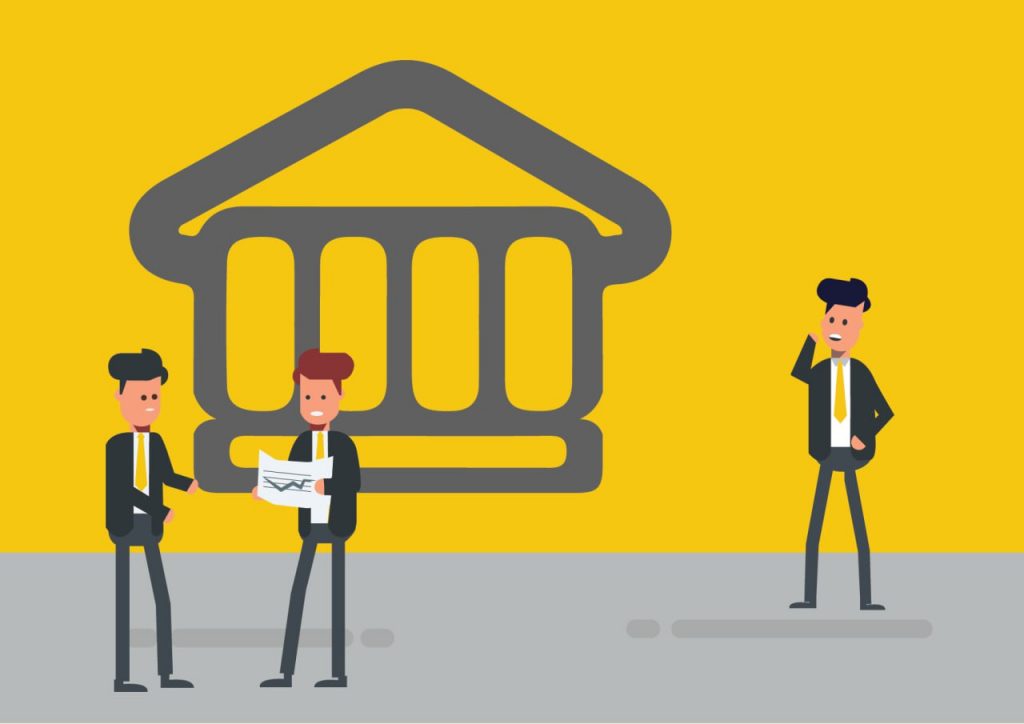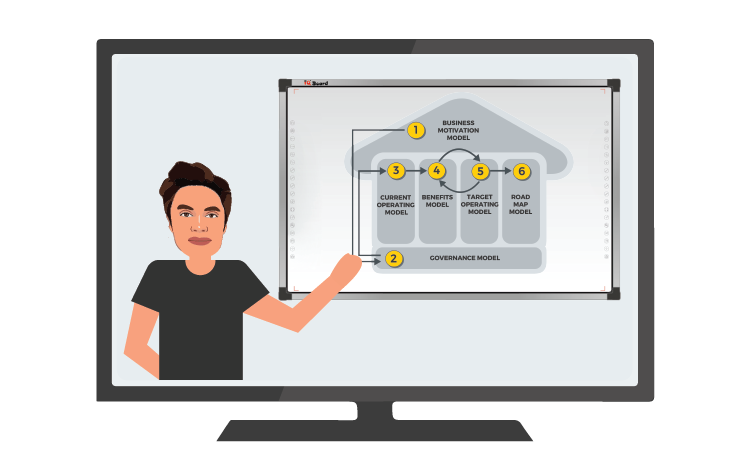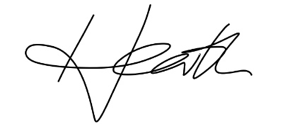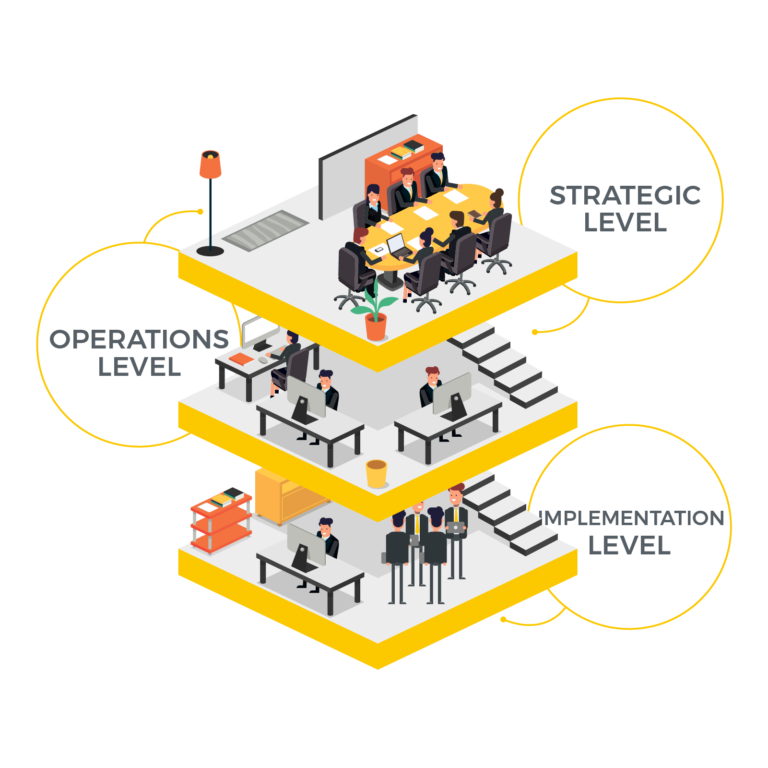This question and comparison comes up as often as the question and comparison between digital transformation and business transformation. Although used interchangeably, they mean different things, and often (confusingly) different things to different people. So once and for all… we’re going to give you the definitive answer.
If you’re a consultant, consultancy or lead one, and are often faced with this question and you need a bullet proof answer, then this post is for you.
So, what are they, and what makes them different?
Here’s a breakdown of the key differences between the two:
Operating Model

The operating model of an organisation is essentially the blueprint that defines how the organisation functions on a day-to-day basis to achieve its strategic goals and deliver value to its stakeholders.
Quite simply – how is it setup to make money.
It encompasses the structure, processes, technologies, resources, and capabilities required to execute the business strategy effectively. An operating model outlines how work is done, how decisions are made, and how resources are allocated.
Components of an Operating Model:
- Structure
The structure of an operating model outlines how an organisation is organised and how its various components are structured to carry out its process and achieve its goals efficiently. The operating model encompasses the organisational hierarchy, departments, processes, technology, and resources that collectively enable the organisation to function effectively.
- Processes
These are the methods and steps used to carry out different activities within the organisation, such as production, marketing, sales, and customer service. The operating model includes the various processes and workflows that govern the execution of tasks and activities. These processes ensure that work is carried out efficiently and consistently.
- Capability
The capabilities of an operating model refer to the skills, knowledge, expertise, and resources that an organisation possesses or develops to execute its activities and achieve its strategic goals. These capabilities are essential for the organisation to function effectively, innovate, and stay competitive in its industry.
- Technology
Technology is a driving force behind the modern operating model. It enables organisations to optimise processes, enhance decision-making, innovate, and create better experiences for customers and employees alike. Organisations that leverage technology effectively can gain a competitive edge and adapt to the rapidly changing business landscape (But, does technology alone drive business transformation? Learn more here).
- Resources
Resources are a critical component of the operating model and refer to the assets, both human and physical, that an organisation requires to carry out its work, achieve its objectives, and deliver value to its stakeholders. Resources enable the organisation to operate effectively and efficiently. Resources within an operating model encompass a wide range of assets, both tangible and intangible, that are essential for an organisation’s operations, growth, and success. Managing and leveraging these resources effectively is crucial for achieving strategic goals and maintaining a competitive edge in the market.
- Governance
The mechanisms and structures are in place to ensure compliance, accountability, and effective decision-making. This aspect involves the decision-making structures, rules, and oversight mechanisms that ensure accountability, compliance, and effective management.
Business Design

Business design, on the other hand, focuses on creating a holistic and innovative approach to building and shaping an organisation (get more detail about business design here).
It involves aligning the business model with the organisation’s purpose, values, and market opportunities.
In today’s customer-focused world, business design aims to create a customer-centric strategy that encompasses not only the products and services offered but also the overall experience for customers and stakeholders.
Components of Business Design:
- Value Proposition
The value proposition is a central component of a business’s strategy and marketing efforts. It’s a clear and compelling statement that communicates the unique value and benefits that a product, service, or solution offers to its customers. The value proposition answers the question: “Why should customers choose our offering over alternatives?”
- Customer Experience
Customer experience (CX) refers to the overall perception and feelings that customers have about their interactions with a brand, product, or service throughout their journey. It encompasses every touchpoint and interaction a customer has with an organisation, from initial awareness to post-purchase support. Creating a positive and memorable customer experience is crucial for building strong customer relationships, fostering loyalty, and driving business growth.
- Business Model
The business model is a fundamental component of an organisation’s strategy and plays a pivotal role in defining how the organisation creates, delivers, and captures value. It encompasses the way the organisation operates, generates revenue, and sustains itself in the market. It is essential for defining the organisation’s operational structure, revenue streams, and competitive differentiation.
- Innovation
Innovation is a critical component of both the operating model and business design. It refers to the process of creating new ideas, products, services, or processes that add value to an organisation and drive its growth. Innovation enables organisations to stay competitive, adapt to changing markets, and find novel solutions to challenges. Fostering a culture of innovation and embracing diverse approaches can lead to breakthroughs that have a lasting impact on industries and the world at large.
- Brand Identity
Brand identity is the unique visual, verbal, and emotional representation of a brand. It’s a combination of elements that work together to create a distinct and recognizable image of the brand in the minds of consumers. Brand identity goes beyond just a logo or design; it encompasses the entire personality, values, and essence of the brand.
Key Differences
- Focus: The operating model focuses on the internal mechanics of how work is performed, while business design focuses on the external aspects of the organisation’s strategy and customer interactions
- Execution vs. Strategy: The operating model is concerned with executing the established strategy efficiently, while business design involves shaping the strategy itself to align with market demands and customer needs.
- Innovation: Business design often involves disruptive innovation to introduce novel approaches and capitalise on emerging trends while the operating model emphasises incremental improvements and streamlining to enhance operational performance.
- Time Horizon: Business design has a long-term perspective, guiding the organisation’s growth and evolution over time yet the operating model has a short-term focus on day-to-day operations and tactical decision-making.
- Competitive Advantage: Business design is differentiating the organisation from competitors and positioning it effectively in the market while the operating model is ensuring stability, consistency, and continuity in operations to meet customer demands.
Conclusion
In conclusion, understanding the concepts of operating models and business design is crucial for comprehending how organisations function, evolve, and succeed in today’s dynamic business landscape.
By grasping these concepts, organisations can create a cohesive and effective approach to structure, strategy, and execution, leading to enhanced operational efficiency, innovation, and sustained growth. Balancing the operating model’s internal workings with the strategic aspects of business design can drive an organisation’s success in a rapidly changing business environment.

Become a Master of Business Transformation
Learn about Business-led Business Transformation using the proven 6-step agile transformation framework trusted by the UK Government, FTSE-100 and fast growing companies
Looking for the Best Training to deliver your Business Transformation?
Search no more!
- 7-Day FREE Trial
- No Credit Card Required

HOBA Academy
About HOBA Tech
If you liked what you read, learn more about Business Transformation and how to bring it to reality with less stress, less effort, less time, less cost, and higher profit. Learn about our award-winning agile Business Transformation framework, already used by thousands across the world to transform their business, including the UK Government, FTSE-100 Companies and start-ups, check it out here.
If you want to read why others are calling The Business Transformation Playbook the “Business Transformation Bible”, read the reviews on Amazon here.
Hope you find that useful. If you did, let me know in the comments below what you like and would like to see next, and share this with anyone you think would benefit from it!
Thank you for reading this!
Sincerely,

Heath Gascoigne
P.S. If you want to join our Business Transformator community of 2,000+ like-minded Business Transformators, join the community on the Business Transformator Facebook Group here.
P.P.S. If you want to learn more about business transformation, check out The Business Transformation Playbook here.












